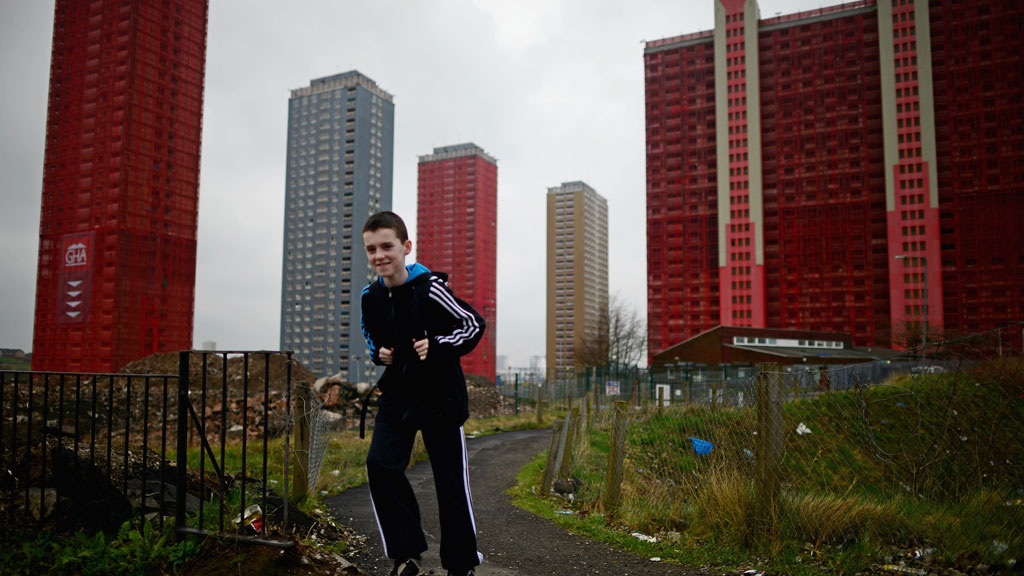Campaigners see red over Glasgow Games demolition plans
“What gives them the right to embarrass Scotland?” Campaigners tell Channel 4 News that plans to blow up Glasgow’s iconic Red Road Flats during the Commonwealth Games are a “disgrace”.

It is being billed as a “bold and dramatic statement of intent”, and will be “the biggest demolition of its kind ever seen in Europe”: five tower blocks demolished in 15 seconds and screened live on television.
But plans by Commonwealth Games organisers to demolish Glasgow’s Red Road Flats as part of the opening ceremony have already gained huge opposition.
An online petition against the demolition of the flats, which have been part of the city’s skyline for more than 50 years, has gained over 10,000 signatures in five days.
Sam Bunton was the architect who designed the flats in 1962. His son, Len Bunton, worked as a quantity surveyor on the project.
Len says the way the flats are being demolished is disrespectful to everyone involved: “People signing the petition think it’s a complete disgrace and so do I. It’s quite unbelievable.
“I recognise times have changed and the flats need to come down but it’s the circumstances of the demolition that concern me.”
I recognise times have changed and the flats need to come down but it’s the circumstances of the demolition that concern me Len Bunton
Mr Bunton was in his early 20s when he worked on the flats. He told Channel 4 News: “Glasgow council said to my father, ‘Get as many houses on to that site as possible.’ The only way to go was up. It was a pioneering project, ahead of its time.”
Built between 1964 and 1969, the Red Road Flats were originally comprised of eight blocks. At the time it was the largest high rise development in Europe. The tallest building was 31 floors high, reaching almost 90 metres from the ground.
One of the blocks was demolished in 2012, and another came down in 2013. Just one block remains occupied, and will be vacant by the end of the year.
‘I’ve got an emotional attachment’
Alison Irvine wrote a book about the flats in 2011. During her research, she spoke to almost 40 residents as well as concierges and other staff from the blocks.
Mrs Irvine said she feels uneasy about the demolition plans: “I’ve got an emotional attachment, I got to know the residents very well. I feel that the history of the flats is complex and complicated and it’s too big a story to tell in the opening ceremony.”
She added: “People were excited to move in. They were moving from houses that were in a bad condition. The flats were a lot more expensive to live in than others in the area. Some people had to have two jobs to keep up the rent.”
And the issue is not just one of bricks and mortar: Mr Bunton said the way in which the flats were demolished would determine how he voted in the referendum on Scottish independence.
“I’ve written to every political leader in Scotland about this. If this is the level of competency of the Scottish government then I’m not going to vote for independence come September. What gives them the right to embarrass Glasgow, to embarrass Scotland in this way?”
Commonwealth Games organisers insisted the demolition would showcase the city’s focus on regeneration. Eileen Gallagher, independent director on the Glasgow 2014 board, said: “By sharing the final moments of the Red Road Flats with the world as part of the opening ceremony of the Commonwealth Games, is proving it is a city that is proud of its history but doesn’t stand still. A city that is constantly regenerating, renewing and re-inventing itself.”